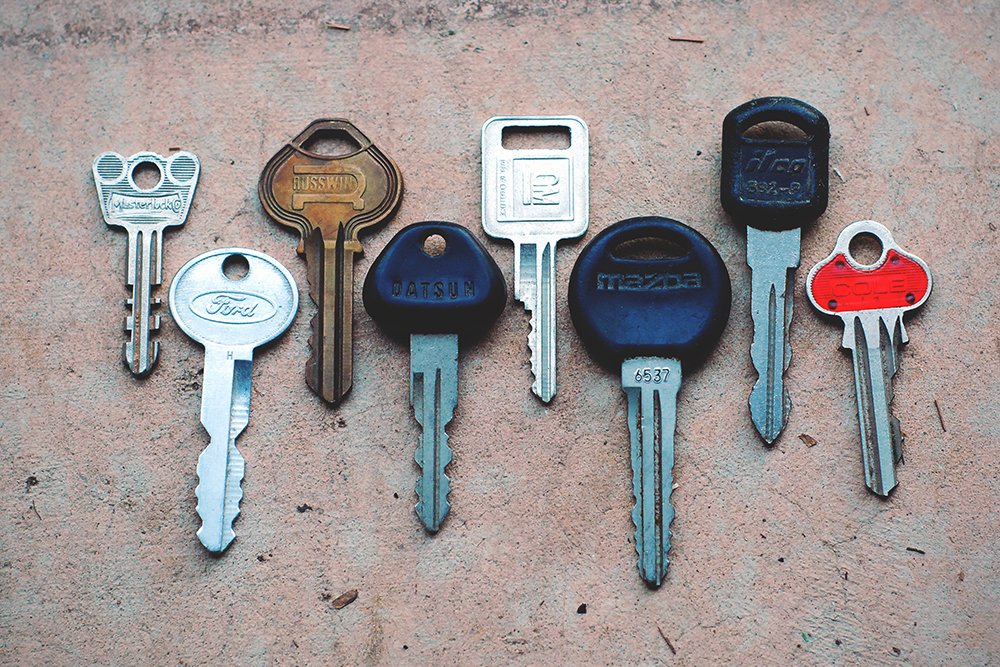RECOIL OFFGRID Transportation Vehicle Security: Part 1 – Auto Theft & Break-In Deterrence
In This Article
Anyone who has been the victim of an automotive break-in knows the feelings of anger and helplessness it creates. Maybe you walked out to go to work in the morning, only to find an empty parking space where your truck once was. Or maybe you made a quick stop at a fast-food restaurant, returning to a pile of smashed glass on the car seat. Regardless of the circumstances, the perpetrator is likely long-gone and may never be caught. If you're lucky, you might see your vehicle or your belongings again.
Despite taking reasonable precautions, this author has experienced several vehicle break-ins over the years. These included the theft of a catalytic converter — an exhaust system component that's worth hundreds of dollars on the black market due to its precious metal content — and a smash-and-grab incident where a thief ransacked the vehicle only to find nothing of value inside. Frustratingly, the criminals in both incidents got away scot-free. These crimes led to questions about how to make it more difficult for the perpetrators to get what they want.
Personal anecdotes aside, automotive theft and burglary are serious concerns throughout the United States. According to the FBI's Uniform Crime Report, there were an estimated 765,484 thefts of motor vehicles nationwide in 2016, resulting in a total financial loss of $5.9 billion that year. Although motor vehicle thefts are down about 30% over the last 10 years, this type of crime has been making a resurgence over the last few years, rising 5.8% in 2015 and 7.4% in 2016. Preliminary data for 2017 shows an estimated increase of 4.1%.

Theft of vehicle contents and parts, which the FBI Uniform Crime Report above categorizes as “larceny-theft from motor vehicles” and “larceny-theft [of] motor vehicle accessories” (i.e. wheels or other parts), also rose in 2016 by 6.5% and 2% respectively. Larceny-theft from motor vehicles the most common of all theft categories, with an estimated 1.3 million incidents in 2016. These types of crime often take 60 seconds or less. A smash-and-grab can be over in as little as 5 seconds.
So, given these trends and the likelihood of auto theft or a break-in affecting one or more of your vehicles, it's wise to prepare and defend against these crimes. This is especially relevant for those of us who keep emergency kits and other valuables in our cars, since your get-home bag could be a nice prize for a thief — especially if it contains cash, weapons, or personally-identifiable information that could be used for identity theft.
The ideal situation is to avoid being a victim in the first place, and this is accomplished through deterrence. We'll be placing most of our focus on this goal.
If you've been following our site for a while, you've probably heard of the “grey man” philosophy. This is generally used in reference to choosing apparel and other on-body gear that won't make you stand out in a crowd, but it can also be applied to the appearance of your vehicle. Depending on your surroundings, this can mean drastically different things. For example, a new BMW 3-series might seem plain in Manhattan, but it'll look extremely unusual in a low-income rural town. And if your vehicle looks unusual, criminals are likely to take a closer look.
However, don't assume that if you have a plain or older car that criminals will overlook it. FBI statistics tell us that the most stolen cars in America in 2016 were the 1997 Honda Accord, 1998 Honda Civic, 2006 Ford F-series, and 2004 Chevy Silverado. These popular vehicles are well-known by thieves, who often have experience breaking into and starting them up. In the case of older cars, a lack of electronic safeguards can allow criminals to start the ignition with a filed-down key or screwdriver.

Older car keys lack the programmed electronic security chips found in newer keys. Photo: Flickr.com/teakwood
Beyond make and model, it should go without saying that clearly advertising your preparedness on your vehicle puts you at increased risk. A light bar on the bumper, toolbox in the bed, or a nice set of wheels and tires can easily be taken without entering the vehicle, much like the catalytic converter mentioned earlier. A sticker, license plate frame, or vanity plate can give thieves an idea what gear might be in your vehicle — you might really like your Glock, but broadcasting this info on your vehicle can cause criminals to go looking for it. If theft-prevention is your priority, keep your vehicle as plain and anonymous as possible.
As for the contents of your vehicle, the same principles apply. Several former criminals have stated in interviews that virtually any personal item visible inside a car could provide motivation for a break-in. Former car thief Steve Sivertsen told KREM 2 News, “You know, if I'm hard up enough and I’ve walked by six cars with change, I know I've got 20 bucks, so I'm going to break your window at least.” Another reformed thief put it as follows: “Unless you go the route of having a car filled so much that you’re a mini-hoarder, you absolutely gotta keep it empty. No loose change. No little screwdrivers, tollway passes, sports equipment, cool signs, t-shirts, or anything!”
Regarding other deterrents, there are many conflicting reports on the deterrence value of security devices such as alarms or steering wheel locks. One of the thieves above said he'd think twice about breaking in if he spotted a blinking light on the dash, but a study by the Highway Loss Data Institute found that these alarms don't noticeably reduce theft losses. A former design engineer at Chrysler said devices like The Club can be circumvented easily by cutting the steering wheel, and may actually be helpful to criminals due to their effectiveness as improvised prybars. In-car dashcams with motion sensors might deter criminals if they know they're being recorded, or they may serve as another item to steal and sell.
Finally, consider where you're parking your vehicle. It's common sense to avoid leaving it in a dark or secluded area, especially overnight. Many thieves are most active between the hours of 2am and 5am. As one put it, “it's nice and quiet [with] less distractions, less people walking around.” Be especially wary if you're in a region where theft is common — refer to the National Insurance Crime Bureau's 2016 Hot Spots report to check your city's car theft rate.

If you see this on the curb near your parking spot, you'll know theft is likely. Photo: Flickr.com/dumbonyc
So, to recap our deterrence tips:
Unfortunately, none of these tips provide an ironclad guarantee that your vehicle won't be touched by criminals. Much like hardening your home against burglaries or protecting your online identity from hackers, you can take steps to make it more difficult, risky, and time-consuming for these individuals. However, this is essentially an arms race. If a thief is determined, clever, and skilled enough to work around your security measures, he'll still be able to gain entry to your car or truck.
So, in the second half of our two-part vehicle security series next week, we'll share some insights into mitigating the damage once a criminal accesses your vehicle.
 STAY SAFE: Download a Free copy of the OFFGRID Outbreak Issue
STAY SAFE: Download a Free copy of the OFFGRID Outbreak Issue
No Comments